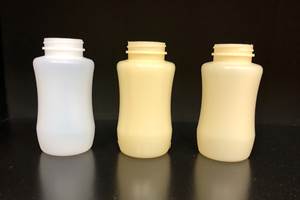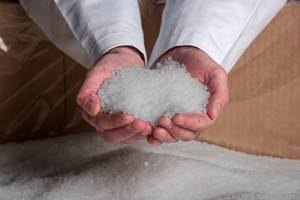Demand for Consumer Products Gradually Improving
Wood On Plastics
The market for U.S.-made consumer products is steadily improving, just not at a very rapid rate. Our forecast calls for this trend to continue through the end of this year, with annual growth for 2012 coming in at just under 2%.
Through the first half of 2012, the prevailing trend in monthly U.S. output of consumer products was steady but unspectacular growth. Compared with the data from the first two quarters of 2011, production of these products has expanded by 1.6% so far this year. The rate of growth for all of 2011 was 1.4%.
So at present, the market for U.S.-made consumer products is steadily improving, just not at a very rapid rate. Our forecast calls for this trend to continue through the end of this year, with annual growth for 2012 coming in at just under 2%. We expect growth to accelerate to just over 3% in 2013.
This theme of slow growth should sound familiar because the same is happening in the overall U.S. economy. Total GDP grew by less than 2% in the first half of 2012, and it is not expected to perform much better until 2013. And just to be clear, the data we are examining this month does not include products such as motor vehicles and parts, energy products, or anything considered “high-tech.” What we are looking at here are your everyday household items that are typically produced in large quantity and are relatively inexpensive.
Although the recent changes in overall market activity have been muted, there are at least three factors that will have significant effects in the future on the processors who manufacture plastic consumer products. These are:
1. The pending recovery in residential construction and real estate. These sectors suffered severe damage when the housing bubble burst in 2008, and it will take them about another year before confidence is sufficiently restored. Five years is a long time to wait for a rebound, but they will recover; and when they do it will generate a strong boost in demand for many types of plastic consumer products.
2. The rising costs of resins and other materials. The price of plastics resins is closely tied to the price of crude oil. In the future, the price of resins in the U.S. will likely be based on the price of natural gas, but since I cannot predict with any certainty when this transition will occur, we have to expect that resin prices will continue to follow the market for crude oil for the foreseeable future. As the global economy recovers, the price of oil, resins, steel, and most other commodities used in the manufacture of consumer products will most likely rise. It is also likely that the price of everything will else rise (this is also known as inflation), so manufacturers may be able to pass some of these costs on to their customers, but then again, maybe not. Suffice to say that the pressures stemming from pricing strategy and cost management will intensify.
3. Less severe competition from low-cost countries. The inherent advantages that arise from manufacturing close to the marketplace cannot be ignored forever. As the market conditions change, and once all of the costs associated with getting a product to market are more accurately counted, the advantages of manufacturing overseas (especially in China) will rapidly diminish for many types of products. Offshoring was trendy for a while, but a lot of that work (and most of the dollars that are currently stored in Chinese vaults) will be repatriated sooner or later. Trends are cyclical, so nothing lasts forever.
WHAT THIS MEANS TO YOU
•Consumers, manufacturers, and policymakers continue to struggle with the concepts of sustainable, recyclable, environmentally sound, etc. But it would be a mistake to think that these things will go away. There are huge opportunities here.
•For molders and extruders of consumer products, the battle will increasingly focus on materials. Materials prices, market acceptance or de-selection, regulations, and performance will play a huge role in how products are designed and marketed.
•These changes will be driven by social media and increased access to the internet
Related Content
How to Extrusion Blow Mold PHA/PLA Blends
You need to pay attention to the inherent characteristics of biopolymers PHA/PLA materials when setting process parameters to realize better and more consistent outcomes.
Read MoreFoam-Core Multilayer Blow Molding: How It’s Done
Learn here how to take advantage of new lightweighting and recycle utilization opportunities in consumer packaging, thanks to a collaboration of leaders in microcellular foaming and multilayer head design.
Read More‘Monomaterial’ Trend in Packaging and Beyond Will Only Thrive
In terms of sustainability measures, monomaterial structures are already making good headway and will evolve even further.
Read MoreWhat to Look for in High-Speed Automation for Pipette Production
Automation is a must-have for molders of pipettes. Make sure your supplier provides assurances of throughput and output, manpower utilization, floor space consumption and payback period.
Read MoreRead Next
Lead the Conversation, Change the Conversation
Coverage of single-use plastics can be both misleading and demoralizing. Here are 10 tips for changing the perception of the plastics industry at your company and in your community.
Read MorePeople 4.0 – How to Get Buy-In from Your Staff for Industry 4.0 Systems
Implementing a production monitoring system as the foundation of a ‘smart factory’ is about integrating people with new technology as much as it is about integrating machines and computers. Here are tips from a company that has gone through the process.
Read More









